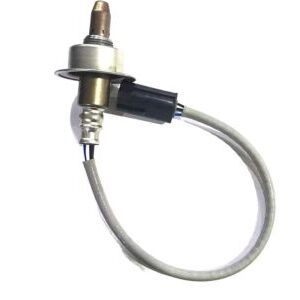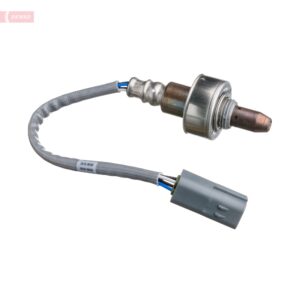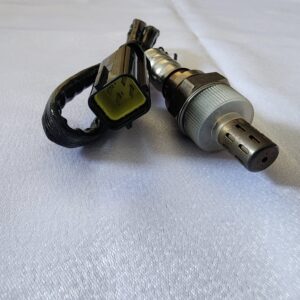Title: Unveiling the Nissan Oxygen Sensor: Enhancing Performance and Efficiency
Introduction:
Nestled within the intricate machinery of your Nissan’s engine lies a small yet powerful component known as the oxygen sensor. Often overlooked, this vital sensor plays a crucial role in optimizing engine performance, fuel efficiency, and emissions control. In this blog, we’ll delve into the intricacies of the oxygen sensor in your Nissan, exploring its function, importance, and maintenance tips to keep your engine running smoothly.
Understanding the Nissan Oxygen Sensor:
The oxygen sensor, also known as the O2 sensor, is a critical component of your Nissan’s engine management system. Positioned in the exhaust manifold or exhaust pipe, this sensor monitors the oxygen content in the exhaust gases exiting the engine. This data is then relayed to the engine control unit (ECU), which uses it to adjust the air-fuel mixture for optimal combustion.
Functionality:
The Nissan oxygen sensor operates by generating a voltage signal based on the oxygen content in the exhaust gases. When the air-fuel mixture is rich (excess fuel), the oxygen sensor produces a low voltage signal. Conversely, when the mixture is lean (excess air), the sensor produces a high voltage signal. The ECU uses these voltage signals to continuously adjust the fuel injection timing, ensuring that the air-fuel mixture remains within the ideal stoichiometric ratio for efficient combustion.
Importance:
The oxygen sensor plays a pivotal role in optimizing engine performance, fuel efficiency, and emissions control in your Nissan. By providing real-time data on the air-fuel mixture, the sensor enables the ECU to precisely regulate fuel injection, maximizing combustion efficiency and power output. Additionally, proper functioning of the oxygen sensor helps reduce harmful emissions, such as carbon monoxide (CO) and nitrogen oxides (NOx), promoting environmental sustainability and compliance with emissions standards.
Maintenance Tips:
To ensure the optimal performance of your Nissan’s oxygen sensor, consider the following maintenance tips:
1. Regular Inspection: Periodically inspect the oxygen sensor and its wiring harness for any signs of damage, corrosion, or contamination. Ensure that the sensor is securely mounted and properly positioned in the exhaust system to prevent inaccurate readings.
2. Clean or Replace: If necessary, clean the oxygen sensor using a specialized sensor cleaner to remove any carbon deposits or contaminants that may affect its operation. In cases of severe buildup or sensor failure, replacement may be necessary to restore proper function.
3. Monitor Engine Performance: Keep an eye out for symptoms of oxygen sensor issues, such as rough idling, engine hesitation, or increased fuel consumption. If you notice any unusual symptoms, have your Nissan inspected by a qualified technician to diagnose and address any underlying issues.
Conclusion:
The Nissan oxygen sensor is a vital component of your vehicle’s engine management system, playing a key role in optimizing performance, efficiency, and emissions control. By understanding its function and importance, as well as following proper maintenance practices, you can ensure that your Nissan continues to deliver reliable performance mile after mile.
In stock (can be backordered)
$56,956.87
Title: Unveiling the Nissan Oxygen Sensor: Enhancing Performance and Efficiency
Introduction:
Nestled within the intricate machinery of your Nissan’s engine lies a small yet powerful component known as the oxygen sensor. Often overlooked, this vital sensor plays a crucial role in optimizing engine performance, fuel efficiency, and emissions control. In this blog, we’ll delve into the intricacies of the oxygen sensor in your Nissan, exploring its function, importance, and maintenance tips to keep your engine running smoothly.
Understanding the Nissan Oxygen Sensor:
The oxygen sensor, also known as the O2 sensor, is a critical component of your Nissan’s engine management system. Positioned in the exhaust manifold or exhaust pipe, this sensor monitors the oxygen content in the exhaust gases exiting the engine. This data is then relayed to the engine control unit (ECU), which uses it to adjust the air-fuel mixture for optimal combustion.
Functionality:
The Nissan oxygen sensor operates by generating a voltage signal based on the oxygen content in the exhaust gases. When the air-fuel mixture is rich (excess fuel), the oxygen sensor produces a low voltage signal. Conversely, when the mixture is lean (excess air), the sensor produces a high voltage signal. The ECU uses these voltage signals to continuously adjust the fuel injection timing, ensuring that the air-fuel mixture remains within the ideal stoichiometric ratio for efficient combustion.
Importance:
The oxygen sensor plays a pivotal role in optimizing engine performance, fuel efficiency, and emissions control in your Nissan. By providing real-time data on the air-fuel mixture, the sensor enables the ECU to precisely regulate fuel injection, maximizing combustion efficiency and power output. Additionally, proper functioning of the oxygen sensor helps reduce harmful emissions, such as carbon monoxide (CO) and nitrogen oxides (NOx), promoting environmental sustainability and compliance with emissions standards.
Maintenance Tips:
To ensure the optimal performance of your Nissan’s oxygen sensor, consider the following maintenance tips:
1. Regular Inspection: Periodically inspect the oxygen sensor and its wiring harness for any signs of damage, corrosion, or contamination. Ensure that the sensor is securely mounted and properly positioned in the exhaust system to prevent inaccurate readings.
2. Clean or Replace: If necessary, clean the oxygen sensor using a specialized sensor cleaner to remove any carbon deposits or contaminants that may affect its operation. In cases of severe buildup or sensor failure, replacement may be necessary to restore proper function.
3. Monitor Engine Performance: Keep an eye out for symptoms of oxygen sensor issues, such as rough idling, engine hesitation, or increased fuel consumption. If you notice any unusual symptoms, have your Nissan inspected by a qualified technician to diagnose and address any underlying issues.
Conclusion:
The Nissan oxygen sensor is a vital component of your vehicle’s engine management system, playing a key role in optimizing performance, efficiency, and emissions control. By understanding its function and importance, as well as following proper maintenance practices, you can ensure that your Nissan continues to deliver reliable performance mile after mile.
| Warehouse | Inventory at warehouse 2 |
|---|



Get E-mail updates about our latest products and special offers.
Sensors and More is Jamaica’s ultimate online auto parts store. Established in 2020, we specialize in genuine electrical parts for Japanese, Read more…
Reviews
There are no reviews yet.